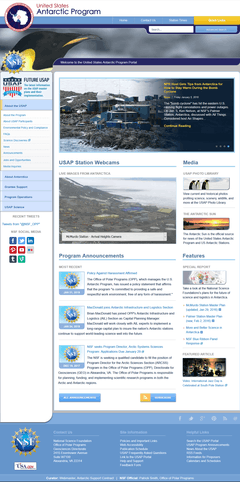Web page
A web page (or webpage) is a specific collection of information provided by a website and displayed to a user in a web browser. A website typically consists of many web pages linked together in a coherent fashion. The name "web page" is a metaphor of paper pages bound together into a book.
Elements
The core element of a web page is one or more text files written in the Hypertext Markup Language (HTML).[1] Many web pages also make use of JavaScript code for dynamic behavior and Cascading Style Sheets (CSS) code for presentation semantics.[1] Images, videos, and other multimedia files are also often embedded in web pages.
Navigation
Each web page is identified by a distinct Uniform Resource Locator (URL). When the user inputs a URL into their browser, that page's elements are downloaded from web servers. The browser then transforms all of the elements into an interactive visual representation on the user's device.[2]
If the user clicks or taps a link to another page, the browser repeats this process to display the new page, which could be part of the current website or a different one.
Deployment
From the perspective of server-side website deployment, there are two types of web pages: static and dynamic. Static pages are retrieved from the web server's file system without any modification,[3] while dynamic pages must be created by the web server on the fly, typically drawing from a database to fill out a web template, before being sent to the user's browser.[4]
References
- Flanagan, David. JavaScript - The definitive guide (6 ed.). p. 1.
JavaScript is part of the triad of technologies that all Web developers must learn: HTML to specify the content of web pages, CSS to specify the presentation of web pages and JavaScript to specify the behaviour of web pages.
- "Behind the scenes of modern web browsers". Tali Garsiel. Retrieved 2018-04-21.
- Melendez, Steven (10 August 2018). "The Difference Between Dynamic & Static Web Pages". Chron. Archived from the original (html) on 20 March 2019. Retrieved 20 March 2019.
Static by definition means something that does not change. The first pages on the World Wide Web were largely static and unchanged, delivering the same information about a particular topic to anyone who visited. In some cases, sites may evolve slightly over time but are still largely static, meaning that they only change when manually changed by their creators, not on a regular and automated basis.
- "Definition of: dynamic Web page". PC Magazine. Archived from the original (html) on 17 January 2017. Retrieved 20 March 2019.
A Web page that provides custom content for the user based on the results of a search or some other request.
